CHANDRAYAAN 2 LANDING LIVE UPDATES: ISRO'S LIVESTREAM KICKS OFF DISCUSSING HIGHLIGHTS AND WHAT WE CAN EXPECT
SEP 07, 2019 01:16 IST
ISRO Chandrayaan 2 moon mission lastest updates: As ISRO mission engineers run final checks and monitor the lander, viewing gallery is filling up.

Update on the Chandrayaan 2 orbiter
The orbiter, which weighed 2,370 kg at the time of launch, gets 70% of its mass from fuel. It carried ~1,680 kgs of fuel for the road, and to make in-orbit adjustments over its year-long mission.
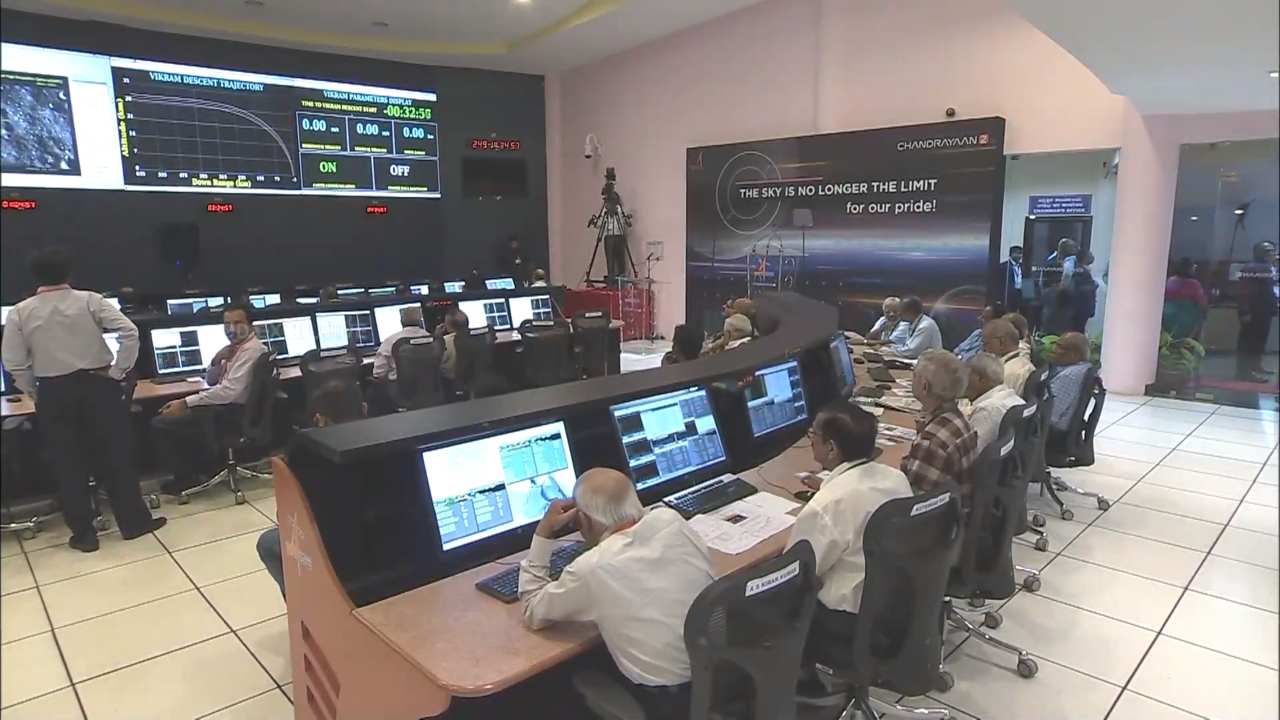
Scenes from the control centre
Here are some images from the heart of ISRO's control centre in Bengaluru
Bengaluru: Scientists gear up for the soft landing of Vikram lander on the South Pole region of the moon. 60 students from across the country, who were selected through the ISRO's 'Space Quiz' competition to watch the landing along with PM Modi, also present at the ISRO centre

As Chandrayaan 2 mission engineers run final checks and monitor the lander, viewing gallery is filling up!

What has been the most significant Moon mission for NASA?
NASA astronaut Jerry Linenger: Apollo 11 landing with Neil Armstrong, Buzz Aldrin and Michael Collins was fantastic! The Apollo 12 mission was good as well. But I think the most significant Moon mission for the US was Apollo 13. We didn't make it to the Moon then. On the way, we had an issue in the tank, part of the spacecraft that got blown out.
But then we saw human ingenuity take over and keeping calm and working the problem in real time, getting all the astronauts back to Earth safely. It was probably NASA's greatest moment, as things didn't go according to plan but we were still able to get humans back to Earth.
We're digging this Chandrayaan 2-inspired Tintin cover!

GSLV-MkIII has a lot to do with making the Chandrayaan 2 & Gaganyaan missions a reality
ISRO developed the GSLV MkIII with limited resources, limited cooperation from the world at large, strife from within, and a budget (of INR 160 Crores) that many space agencies would laugh at. This is nothing short of enviable. Here's how ISRO's heaviest rocket compares to some of the best in the world.
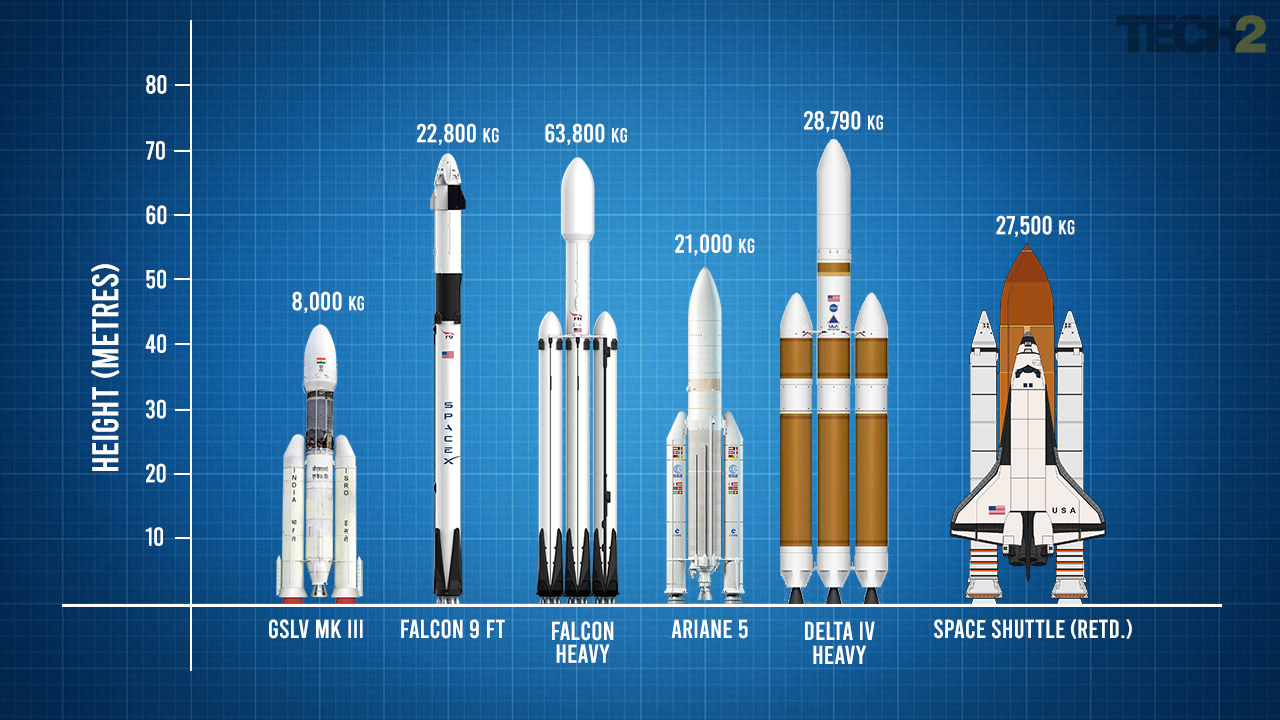
On the 15 mins of Terror: How scary is this, really? (2/2)
NASA astronaut Jerry Linenger: In this case of the Moon, there is no atmosphere. So, the Rover and Lander (modules) have to decelerate from a speed which roughly 25-30 times that of the fastest aircraft on land. If you are on the rover, you won't hear anything as there is vacuum of space there.
So it's a kind of freaky wow kind of thing, to bring the lander down from that speed. It is well thought out and it's very autonomous.
On the 15 mins of Terror: How scary is this, really? (1/2)
NASA astronaut Jerry Linenger: It's the critical part! I am reminded of my own coming back from the orbit, when we were going at Mach 25, which is 25 times the speed of sound. When you are entering the Earth's atmosphere when the friction is high, so that's our 45 minutes of terror. We have to hit the runway at the Kennedy Space Centre in Florida, at a speed of 225 knots! But you have the atmosphere and friction to slow you down.
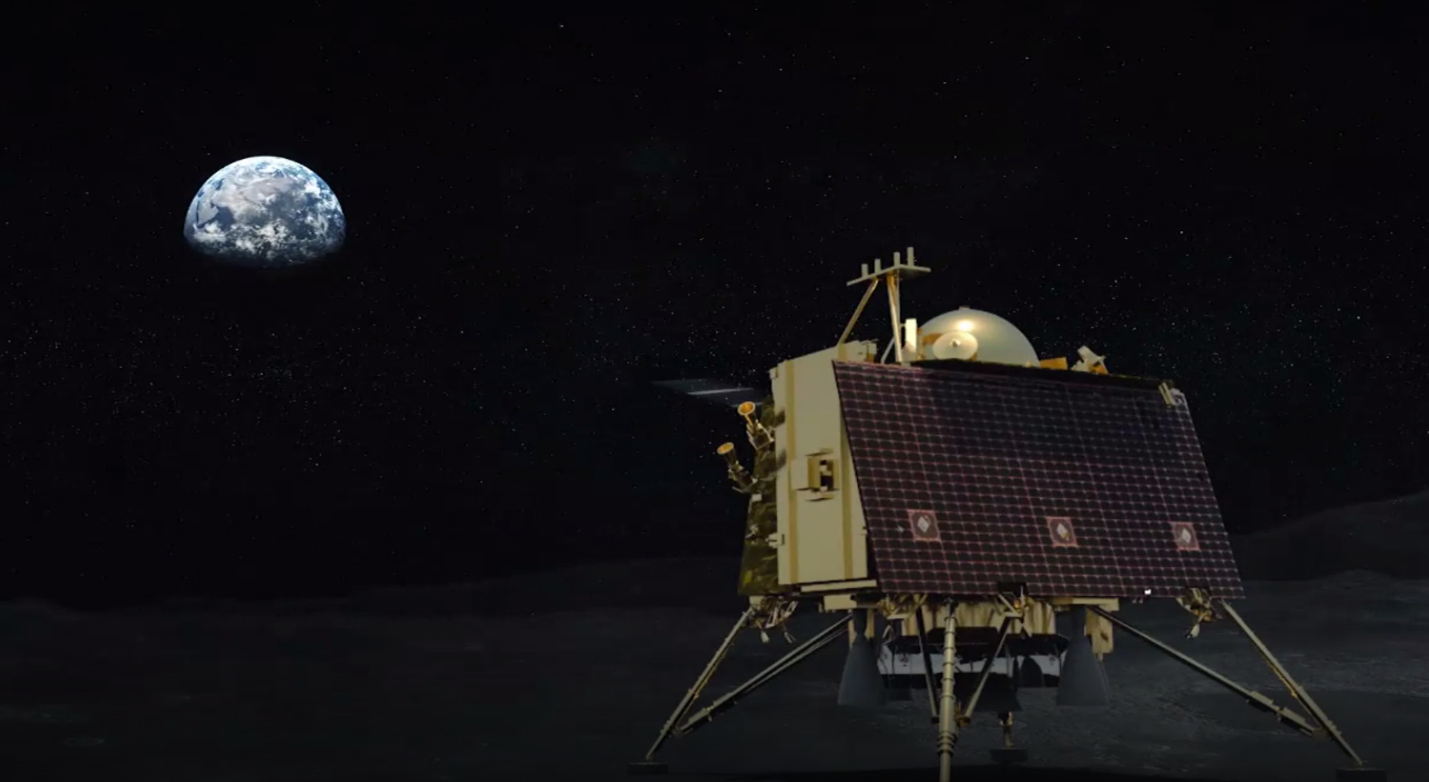
From a bullock cart to the moon: A (very) brief history of ISRO
All India Radio has put together a short clip that talks about ISRO's journey from its inception several decades ago.
When we look down on Earth, we realise that we are all one: NASA astronaut Jerry Linenger Speaking about how space missions are unifying and aspirational, "I was with two Russian cosmonauts for five months. When we look down on Earth, we realise that we are all one. We have the same aspiration. We have the same humanness in us and we just want to move the mankind forward."

NASA astronaut and space analyst Jerry Linenger weighs in on what the landing means for the world!
"I just want everyone to know that the whole world is following this and it is not just Indians. This is the first time any country is going to the South Pole of the Moon!" says Linenger on Nat Geo's live stream. "India is leading this and as a representative of the US, we are nervous and we are hoping for success. This increases the knowledge base of the Moon"
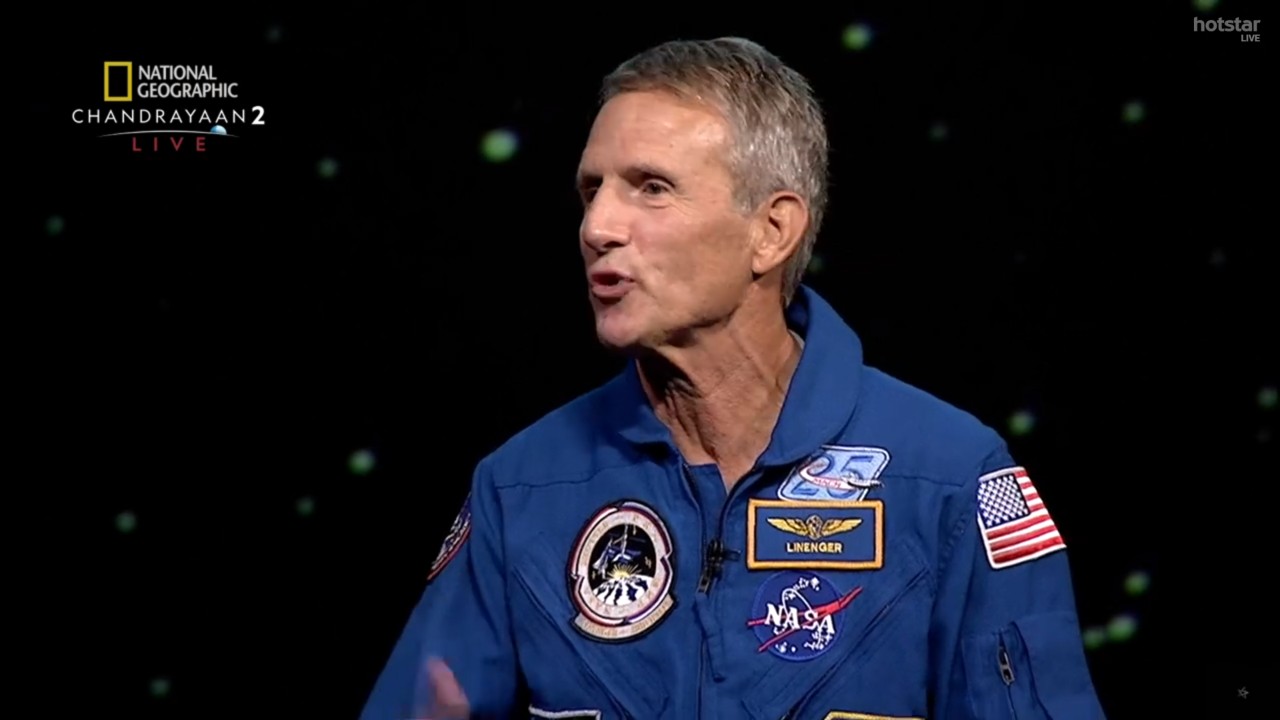
The moon has an elliptical orbit which makes it quite close to Earth and sometimes quite far off.
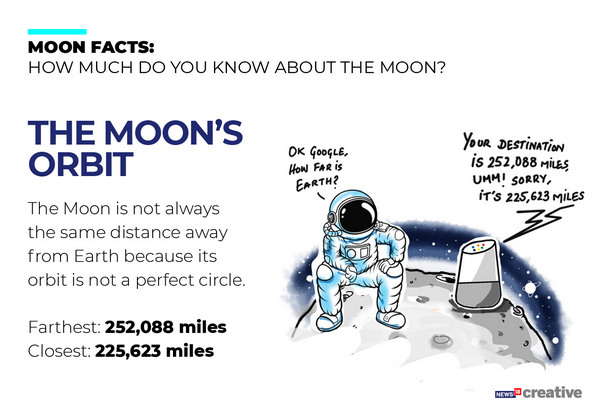
Footprints on the moon will last forever and here's why The footprints of Neil Armstrong, the first man to walk on the moon's surface, are still there. As the moon doesn't have an atmosphere there is no wind to blow the footprints away.
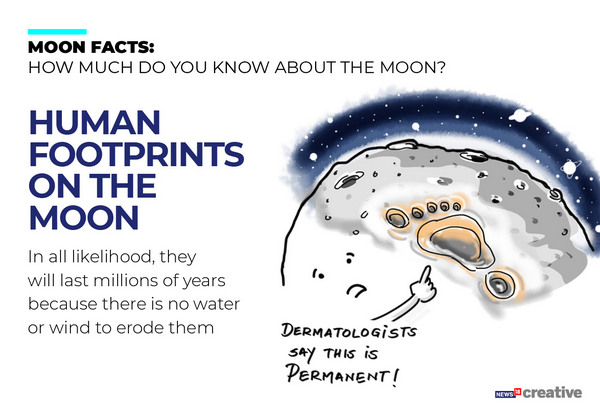
Your weight on the moon is 1/6th of that on the Earth!
The Moon's surface gravity is weaker because it is far less massive than Earth. That is why planets such as Jupiter and Saturn have such a strong gravitational force due to their giant size.
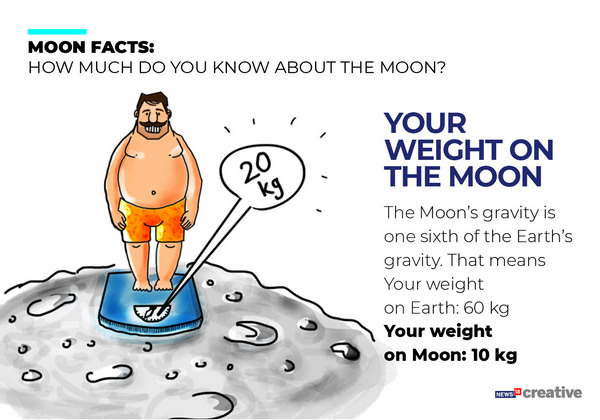

Here's a video by ISRO explaining how the Pragyan rover was made
https://twitter.com/isro/status/1169947156381192192
How much do you know about the Moon? The moon, with a diameter of about 2,159 miles (3,475 kilometers), is bigger than Pluto.
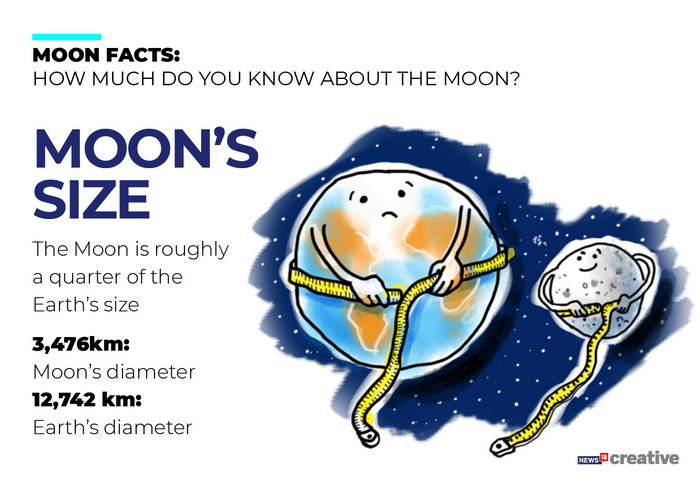
Here are some of the important Moon missions that have contributed to our knowledge
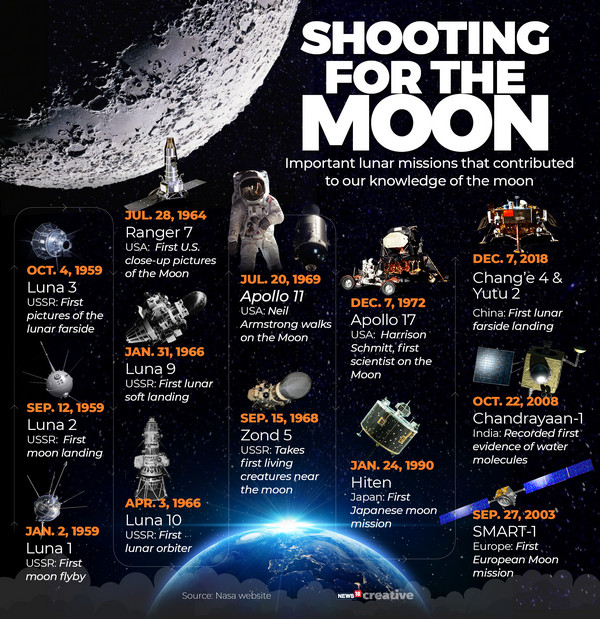
Here are all the future missions to the moon!



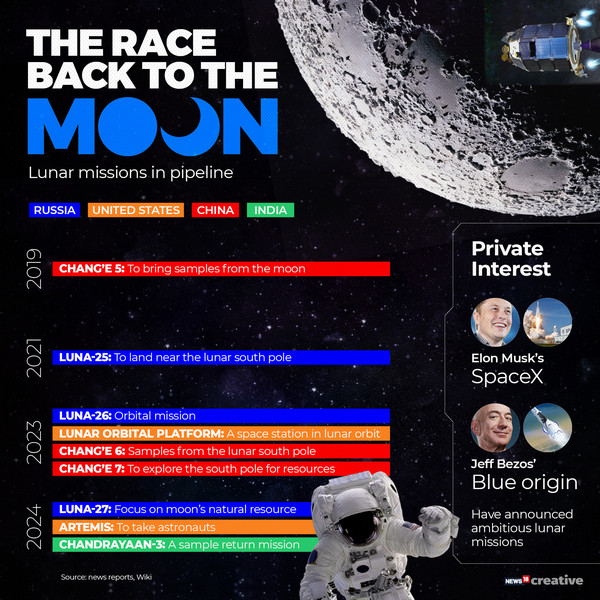
















No comments:
Post a Comment